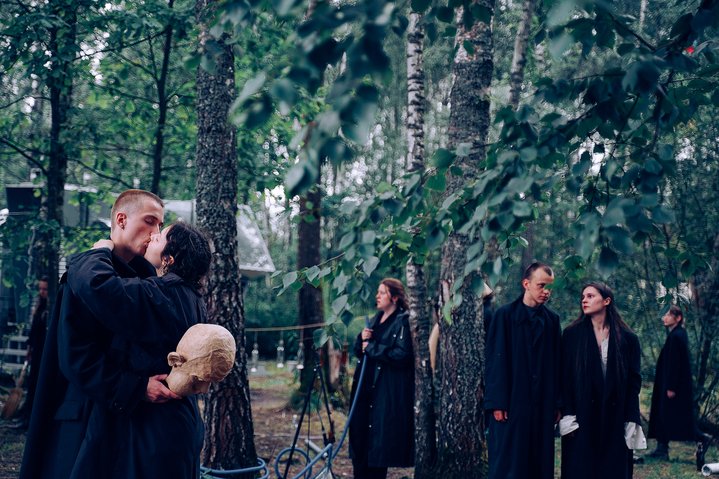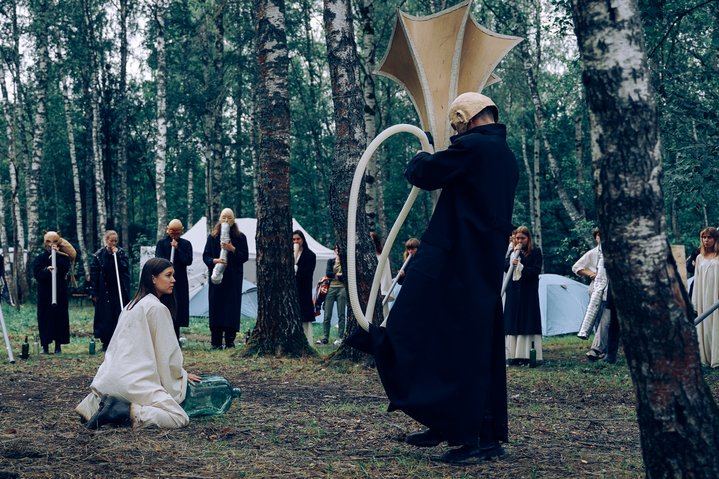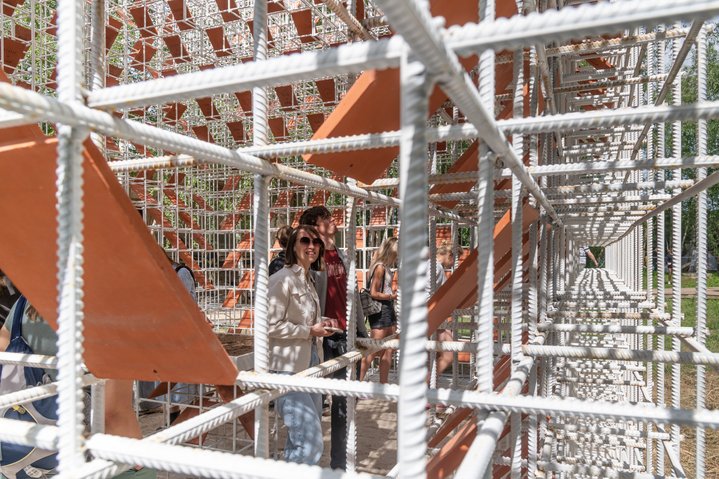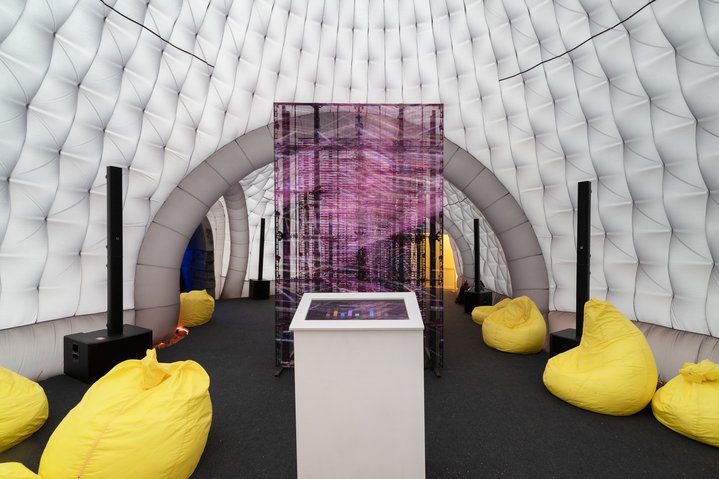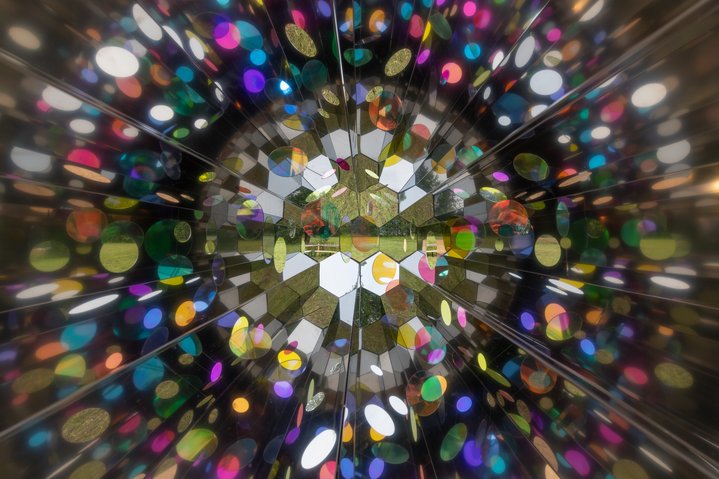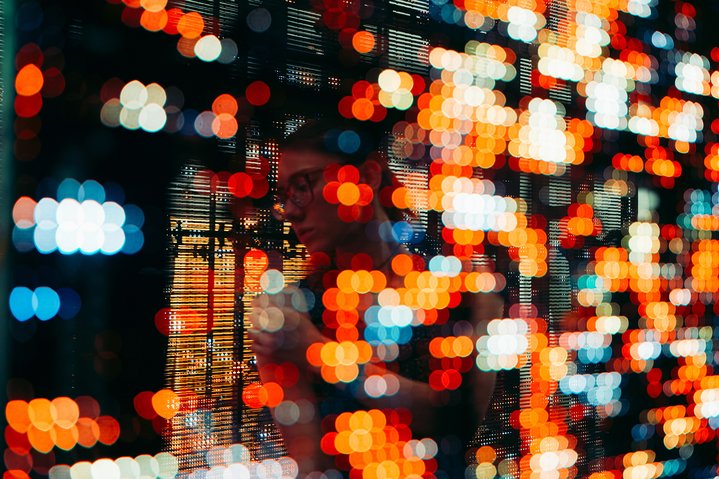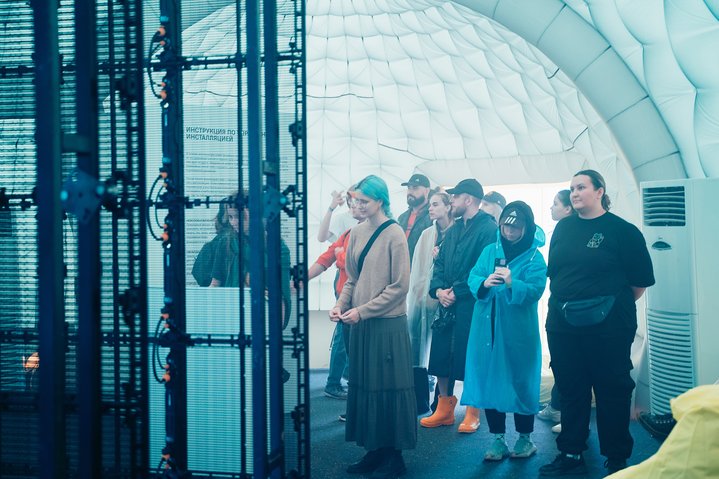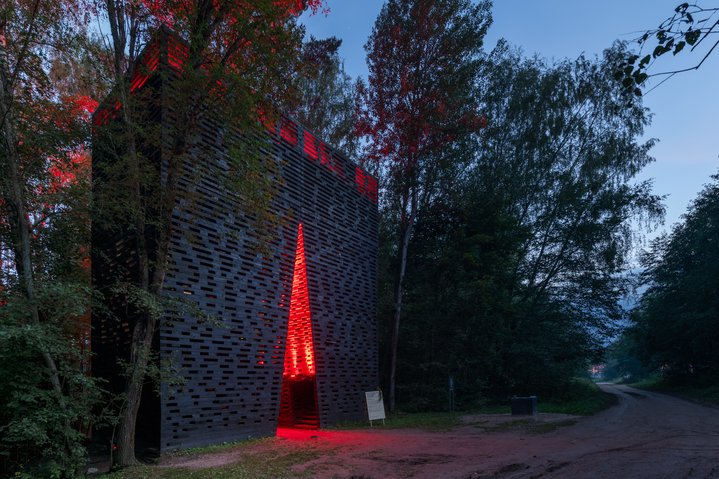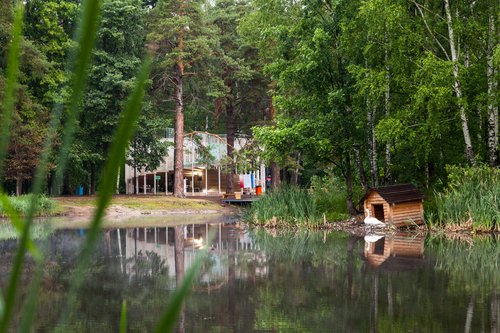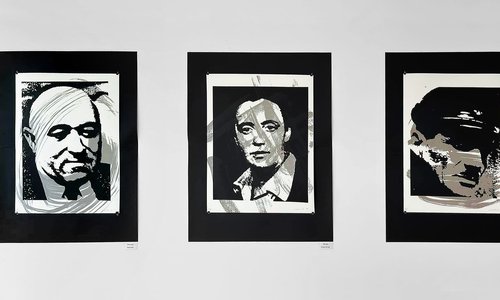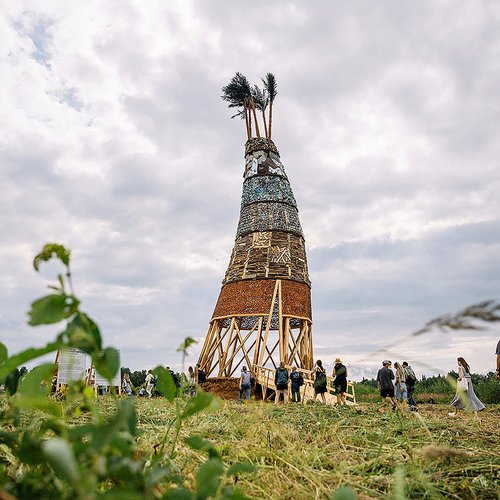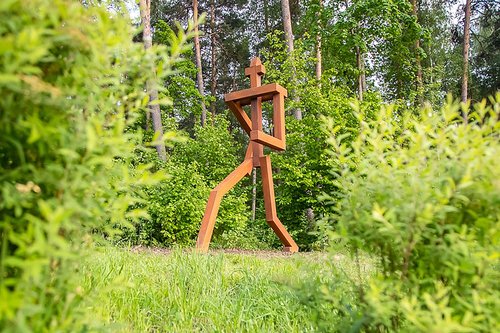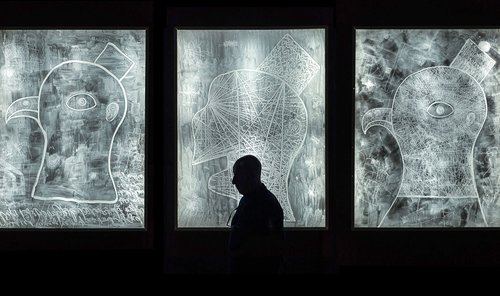Pavilion of Delusions. Archstoyanie 2023. Nikola-Lenivets Art-park. Courtesy of Nikola-Lenivets Art-park. Photo by Alexey Naroditsky
Magical Future Prophesies at Land Art Festival ‘Archstoyanie 2023’
In an era of extreme uncertainty, the festival of land art in Nikola-Lenivets invites architects and artists to abandon the rational and reflect on the future through ancient magic.
Archstoyanie, Russia’s premier Land Art festival has long been known for its love of the pagan, its gigantic sculpturesburnt down during Shrovetide, its strange processions and other colourful rituals. This summer, things have literally taken a dramatic turn. Visitors to the annual festival, in Nikola-Lenivets village some two hundred kilometers from Moscow, were greeted by eccentric characters dressed in medieval costumes wearing papier-mâché masks and in black coats, ringing bells to invite you to follow them. Theatre troupe ‘Pukh I Prakh’ together with choreographer Olga Tsvetkova (b. 1984) and composer Anton Svetlichny (b. 1982) created a magical performance around four new large-scale art objects in the park.
Festival goers could not help but feel spell-bound by the actors singing and dancing around on muddy ground, over fallen tree trunks and among the birch trees. You could almost believe in forest nymphs and you felt guided by mysterious forces as you came upon the performance ‘Tatiana's Dream. Fortune-Telling’. It felt like a feast during the plague, a monstruous extravaganza without words, yet somehow understandable to everyone. Twigs and shells with notes were handed out to selected members of the audience at the end of the performance. I was given a scroll with a quote from ‘Poltava’, a poem by Pushkin: ‘But in the temptations of long punishment/Having endured the blows of fate, Russia became stronger’. It is a prediction which offers some hope during dark times.
‘Project Catharsis’ by Pyotr Sovetnikov (b. 1990) and Vera Stepanskaya (b. 1991) expressed reflections on the Russian soul and Russian contemporary culture. Dedicated to the patience and suffering of the Russian soul for a bright future which never comes (and is always very far away) this was a sort of inhabitable obelisk. You could see the message reflected in the design of the structure itself, a cramped living space with a low ceiling and an oddly shaped window giving almost no natural light. Once up in a tiny space on the first floor, you could just see the daylight streaming through a distant window in the roof.
Actors dancing and singing in front of the obelisk, asked the audience, "How long do I have left to live, cuckoo?". Initially fear-provoking, the mood however turned quickly to love in the guise of fortune-telling bottles with messges such as ‘Find out who will kiss you soon?’. Pumped up with amorous thoughts, visitors then encountered a large sculptural monstrosity, ‘Air Pipeline’ by art group ‘Alycha’. A sort of half-creature, half-architectural construction made of metal pipes, it gloomily portends that fresh air will become an unaffordable luxury for ordinary people in the not so distant future.
At the Rotunda, designed by Alexander Brodsky (b.1955) and one of the oldest pavilions in the festival, visitors encountered ‘Kosandra’ by artist Ulyana Podkorytova (b. 1984). This gigantic 20 metre animated plaited braid, a traditional Russian hairstyle, was carried around in the space, creating the impression of submission and worship to some ancient, Russian forces. Outside the pavilion, you could see this rather wonderful Kosandra later ‘wandering’ through the fields and trees, giving out predictions to visitors, dozing off during breaks, wrapped around various objects.
This year at Archstoyanie, there was a new programme of ‘institutional camps’. Participants came from private galleries and cultural foundations in Moscow and three other Russian cities. The Victoria Gallery from Samara, founded by the gas tycoon Leonid Michelson, presented the artsy quest project which involved finding one hundred small-scale works by contemporary artists created in different media concealed around the art park and a dedicated telegram bot helped visitors to search for the hidden treasure. Siyaniye, a contemporary art centre from Apatity in the far North of Russia, presented a ‘Garden of Introduced Plants’, plants that were once brought to the Arctic Circle (to which they adapted), and which now have been returned to their original conditions. The experiment will show whether the Maak cherry and common rowan will be able to make the readjustment from such extreme conditions to milder ones.
‘Prediction Pavilion’ a total installation by Anton Kochurkin (b. 1977) and Yan Kalnberzin (b. 1975) looks like a cloud structure,conceptually based on contemporary technologies. Hidden inside it there is a media installation based on computer algorithms which gives viewers their own individual prophecies at will. From high-tech to low tech: the ‘Capsule of Predictions’ by Alexey Kozyr (b. 1967), from which this edition of Archstoyanie was named, is a giant 6 metre tall metal storage container with 1,550 notes written on paper which was buried in the ground on the last day of the festival. It is due to be dug up in 2050 … but maybe that is too soon? The motto of Archstoyanie 2023 is to refer to the ancient past in order to make predictions about the future. And even if our future has not become clearer, there is still the forest, art and energy of Archstoyanie.
Archstoyanie






